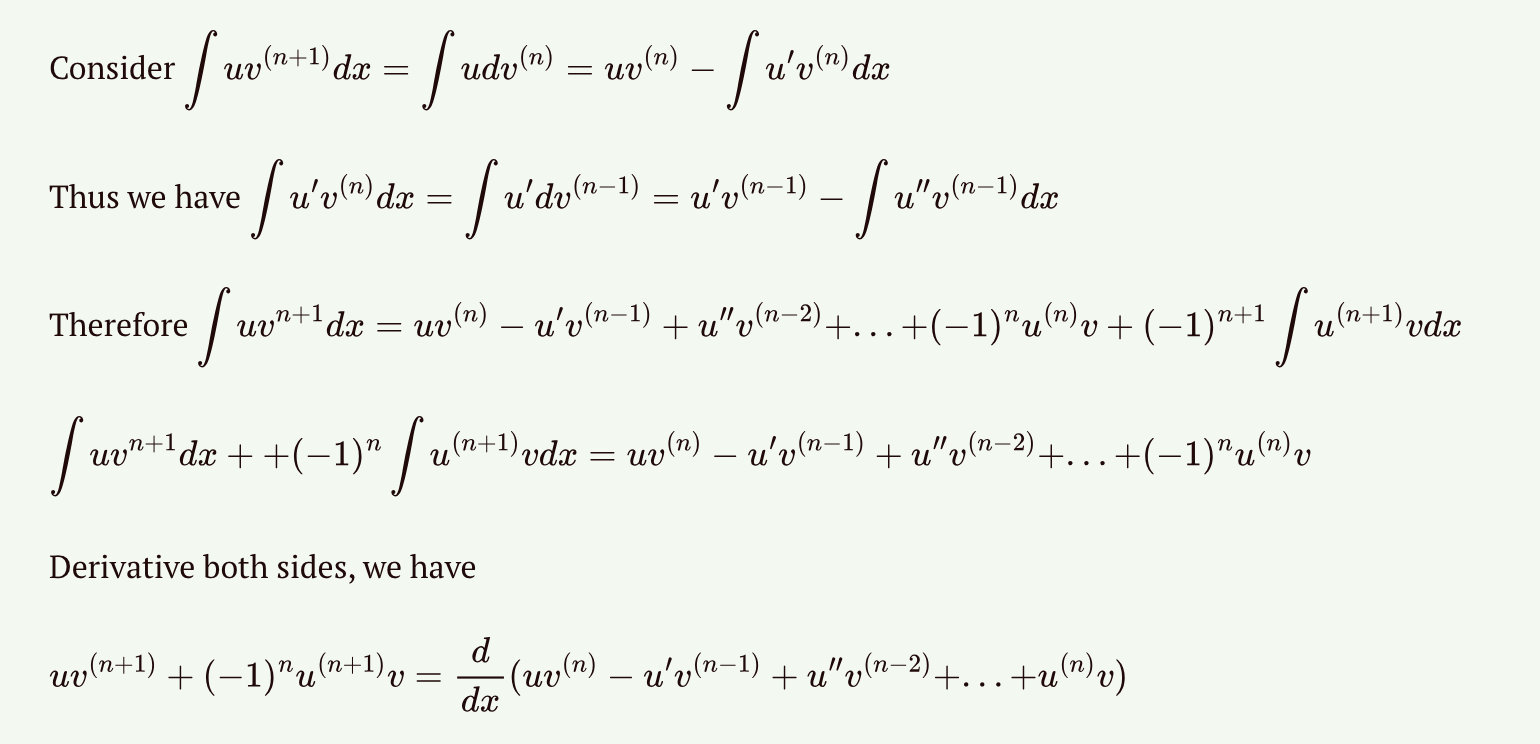This blog rewrites my work from two years ago in a more precise way.
Integration by Parts and Polynomial Identities (sum and difference of the n-th powers of x and y)
Leibniz's rule for higher derivatives
Let
Notice that
Then we have the following equations:
And
Proposition.
Let
Proof.
We use mathematical induction here.
Assume that
Corollary. Leibniz Law for Higher derivative.
i.e.
Integration by Parts and Polynomial Identities

That is,
But
Hence we have
That is a way to see the identity



No comments:
Post a Comment